I know it's been ages since I've updated - but I've kept finding that I have work that needs to be done. I guess it's just a matter of postponing the writing of my essays...
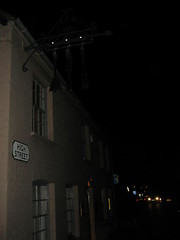
After all I'd heard about the Fat Duck, and with all the anticipation of having a dinner there (it has a three month waiting list), when we finally arrived, I was a bit underwhelmed by its nondescript location. Situated in Bray, a tiny little village outside of London, it really is in the middle of nowhere. Even when you get to the restaurant, the only clue to its presence is Heston Blumenthal's signature logo outside; three utensils cleverly doubling as parts of a duck's anatomy.
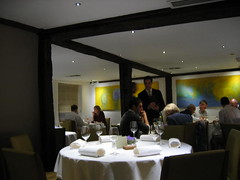
The interior, too, is very unassuming, for a restaurant that has the reputation of being the second best in the world. The lighting is perfect, and the tables impeccably laid. Strangely there are too many waiters - though this may be because a name like Blumenthal's attracts so much free labour.
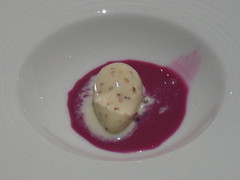
The Fat Duck is one of the bastions of molecular gastronomy, and the amuse-bouche certainly reinforced that. A pomery mustard ice-cream with a red cabbage gazpacho, this was an unsual combination, to say the least. However, it was not unenjoyable - the mustard ice-cream was subtly piquant; refreshing in its mild pepperiness, its slight headiness and icy creaminess. The red cabbage gazpacho was strangely sourish, which went well with the ice-cream, but was a little too tart to enjoy on its own.
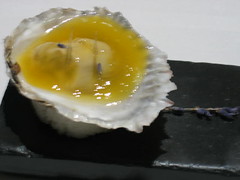
Our second palate-teaser was a fresh oyster served with passionfruit jelly. I felt this was slightly too exotic a pairing, with the flavour of the passionfruit overwhelming the delicate taste and texture of the oyster.
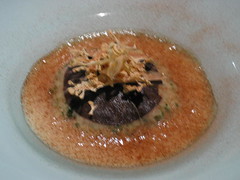
I started with a cauliflower risotto, served with a carpaccio of cauliflower and chocolate jelly, dusted with cocoa powder. I was really surprised with this dish, closely related as it is to Jamie Oliver's chocolate risotto. The risotto was perfectly creamy, with the blandness of cauliflower, offset by the sweetness of the chocolate and cocoa powder. The cauliflower carpaccio (really just very crispy roasted shavings of cauliflower), while repetitive, added a contrasting and welcome texture.
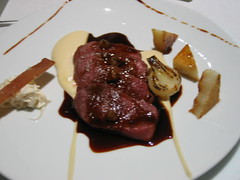
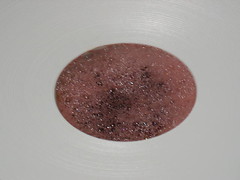
My main course took the form of a saddle of venison, served with celeriac puree, marron glacé and sauce poivrade. It also came with a civet of venison with pearl barley and red wine. The venison was quite excellent, a perfectly-executed combination of flavours and a riot of colours to boot. The pearl barley and civet were a deft touch; the barley sweetening and attenuating the sharpness of the red wine, as well as providing additional liquid for the sauce in the main dish.
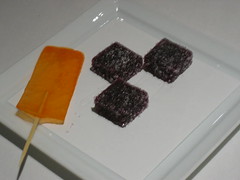
At this point we were presented with further examples of why the Fat Duck deserved its reputation for culinary alchemy - a carrot-orange lollipop and some beet jelly sweets. The sweets tasted almost like those blackcurrant pastilles I enjoyed very much in my youth, and the carrot lollipop is surely a good way to get children to eat their vegetables.
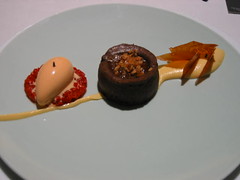
My meal ended with a chocolate fondant with cardamom, dried apricot yoghurt and harissa ice-cream. While the chocolate fondant was intense and exquisite, I did think the use of harissa was a bit too extreme. The heat spread quickly through my mouth like wildfire, and made it difficult to enjoy the rest of the dessert. Too strong for me, I had to leave the harissa to the side.
While I appreciated the obvious thought and effort that had gone into the creation of every dish, I did think that molecular gastronomy was more gimmicky than more conventional cooking, but who is to say where cooking ends and science begins? I applaud Heston Blumenthal for pushing the limits of culinary possibility, and the Fat Duck is a restaurant to be enjoyed, rather like a work of art, out of deference to its creator.
The Fat Duck (Molecular Gastronomy)
High Street
Bray, Berkshire
SL6 2AQ
United Kingdom
Tel: 01628 58033
Website



No comments:
Post a Comment